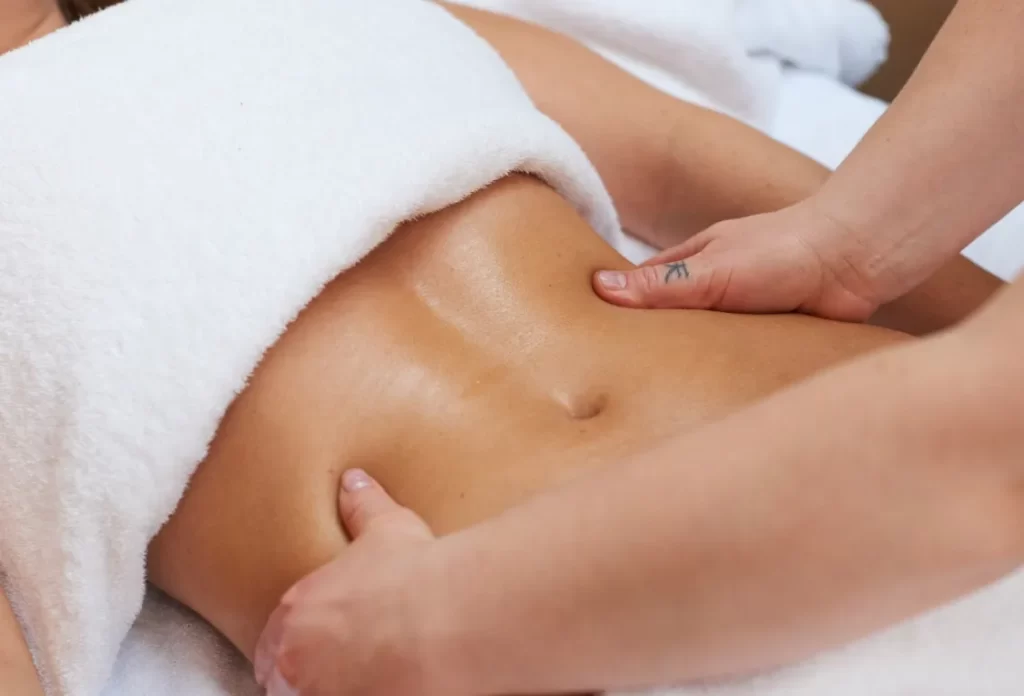Bringing a new life into the world is a transformative experience—physically, emotionally, and hormonally. Yet while new moms are often flooded with advice on baby care, one of the most essential forms of maternal care often goes unmentioned: postpartum massage. More than just pampering, it’s a powerful recovery tool backed by science and experience.
Key Takeaways
- Reduces pain and swelling: Targets lower back, hips, and shoulders while enhancing circulation.
- Safe after C-section (with clearance): Modified techniques help ease scar tissue and post-op discomfort.
- Supports emotional well-being: Decreases cortisol and anxiety, improves sleep and mood.
- Timing matters: Most moms can begin as early as 3 to 7 days postpartum, pending health provider approval.
What Is Postpartum Massage?
A Targeted Healing Experience
Postpartum massage is not your average spa rubdown. It is a specialized therapy designed for the unique strains, aches, and hormonal shifts that accompany childbirth. From tense shoulders (thanks, breastfeeding) to sore hips and swollen legs, this type of massage focuses on:
- Easing circulation and reducing swelling
- Releasing tension in overused or injured muscles
- Supporting hormonal rebalance
- Enhancing emotional recovery through touch
Gentle yet deeply therapeutic, it bridges physical recovery and emotional restoration.
The Proven Benefits of Postnatal Massage
Science supports what many moms already know: postpartum massage feels good and does good. Here is how:
Physical Recovery
- Improves blood flow which accelerates healing
- Reduces muscle pain especially lower back, hips, neck
- Lymphatic drainage helps eliminate postpartum swelling
Emotional Support
- Decreases cortisol which helps regulate stress and anxiety
- Boosts oxytocin which may aid milk letdown and bonding
- Enhances sleep quality which is a major win for exhausted moms
Is Massage Safe After a C-Section?
Yes, but only with specific precautions.
C-section recovery requires special care. Postpartum massage can still be safely enjoyed after surgery, focusing on areas away from the incision site. Here is what is safe:
- Upper back and neck: Relieves breastfeeding strain
- Legs and calves: Encourages circulation and clot prevention
- Gentle abdominal drainage: Only after full healing, and with provider clearance
Always consult with your OB-GYN first. Most providers give the green light 2 to 4 weeks after surgery.
When Can You Start?
Recovery timelines vary, but here is a general guide:
Vaginal Delivery:
- Most moms can start massage 3 to 7 days postpartum, if there are no complications.
C-Section:
- Wait until cleared by your doctor, typically 2 to 4 weeks post-surgery.
Always start gently. A trained postpartum massage therapist will adapt techniques based on your needs and delivery type.
Real Talk: What My First Postpartum Massage Was Really Like
Five days post-birth, I was wrecked—aching hips, knotted neck, and zero sleep. One 45-minute massage later? I felt human again. I even cried.
From relief. From oxytocin. From finally being touched for me, not for feeding, burping, or changing.
And then? I slept for three hours straight. A postpartum miracle.
Emotional Healing: The Hidden Power of Touch
Postpartum massage is not just physical. It is permission to pause. For many new mothers, the first session becomes a moment of release.
- Releases trauma from a difficult birth
- Reframes negative birth experiences
- Creates space for self-reconnection
It is not fluff. It is therapy in its most primal, healing form.
Types of Postpartum Massage (And When to Try Them)
1. Swedish Massage
Best for full-body relaxation, improved circulation, and gentle tension release.
2. Lymphatic Drainage
Great for reducing swelling and water retention.
3. Targeted Deep Tissue
Helps resolve intense tension (shoulders, back, hips). Skip this if you have had a C-section recently.
4. Abdominal Massage
Beneficial for digestion and uterine tone. Only consider once your provider confirms your healing is complete.
Choosing a Qualified Postpartum Massage Therapist
Not every masseuse is qualified for postnatal care. Here is what to look for:
- Licensed therapist with specialized postpartum experience
- Willingness to consult with your healthcare provider
- Use of side-lying positions, bolsters, and extra support
- Ability to travel to your home, ideal in the early weeks
Still unsure? Read real experiences from other moms in our client reviews to see how postpartum massage changed their recovery.
Frequently Asked Questions
Can postpartum massage help with breastfeeding?
Yes. Stimulating oxytocin can assist milk letdown and reduce tension from prolonged nursing positions.
Is it safe during postpartum bleeding?
Light massage is fine. Just avoid the abdominal area until bleeding subsides and you have been cleared by your doctor.
Can I bring my baby?
Some therapists allow it. If not, coordinate with a partner, doula, or babysitter for uninterrupted care time.
For more details on session length, dress code, or logistics, visit our full massage FAQs page.
Final Thoughts: This Is Not a Luxury It Is Recovery
Massage after birth is not indulgent. It is intelligent. It supports the whole mother: her body, her mind, her hormones, her heart.
In the whirlwind of newborn life, let this be your gentle return to yourself.
Curious about cost? Check the massage price list for home visits and packages tailored for new moms.
Ready to Book?
Experience the difference of expert postpartum massage from therapists trained in maternal recovery. Visit Empress Balinese Massage to explore home visit options designed for your healing timeline.



